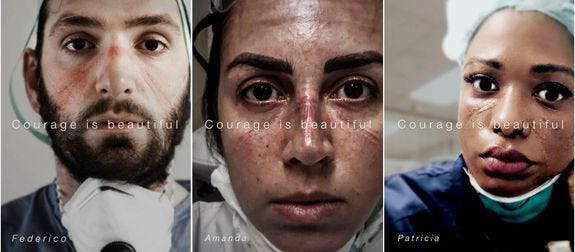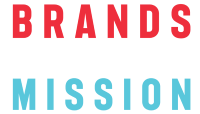Welcome!
First, an introduction to Brands on a Mission:
We are a small team, led by Myriam Sidibe, operating within a large global network. Together we are driving a movement to catalyse and generate an additional US$1 billion investment in sustainable business models and improve the lives of 100 million people sustainably within health and well-being, contributing to achievement of the Sustainable Development Goals by 2030.
Using Brand on a Mission’s Purpose Tree framework [learn more here on our latest HBR article], we drive action across three core axes:
- INSPIRE corporations and individuals that it is possible to merge business and public health goals, and deliver real social impact
- CATALYSE change through key public health issues and business models that will contribute to solving them
- SHARE knowledge, skills and capabilities
What’s in a name?
Our Purpose Tree is based on the baobab tree, a tree that grows in Africa and stays alive for over 1000 years. Known as the ‘tree of life’, these majestic trees provide shelter, clothing, food and water for the animal and human inhabitants of the African savannah. And in the shelter of the baobab conversation happens and decisions are taken. In turn, our aim is that our publication – ‘Under the baobab’ – will help to stimulate discussion with the people around you, sharing information, inspiring ideas and helping to catalyse action.

April Spotlight: For Companies, Real Purpose Means Doing Mission-Driven Work
By Myriam Sidibe
Myriam Sidibe is the author of Brands on a Mission: How to Achieve Social Impact and Business Growth through Purpose (Routledge, 2020), as well as “Marketing Meets Mission” (HBR, May-June 2020). Formerly the Director of Social Mission at Unilever, as well as a Senior fellow at the Kennedy School of Government at Harvard University, she founded Brands on a Mission to advise brands on accelerating their health and hygiene impact. She is based in Kenya and is also a professor of practice at the London School of Hygiene and Tropical Medicine.
I never saw myself in the corporate world. Back in 2005, I was finishing my doctorate in public health in London when a manager at Unilever’s Lifebuoy soap brand recruited me. The brand saw a growth opportunity in fighting disease in developing countries, as well as a social responsibility to help. It wanted to partner with public health organizations to promote handwashing with soap. The manager thought I could help, as I had done fieldwork involving handwashing and was well connected in public health.
From a young age, I had wanted to help the most vulnerable people in the world; I just hadn’t figured out how. It had never occurred to me that a for-profit company would get involved. But suddenly a global company with immense resources wanted to do just that, to have me embed handwashing in a soap brand and drive that agenda.
My new colleagues and I set a goal of getting one billion people to wash their hands regularly. It wasn’t easy, but we got there. Along the way I was promoted to Director of Social Mission, a position and career path I had created. It took me beyond handwashing and got me involved with efforts across Unilever — and that’s when my own purpose came up against the realities of commerce.
I thought we were coming up with good ideas. Our projects were winning awards and favorable press, my budgets were getting approved, and we were achieving ever greater impact through our programs. But I wasn’t moving beyond Lifebuoy. How could I spread this approach to social justice to other businesses? Not all brands had a mission as clear as Lifebuoy’s, nor the boldness to adopt such a big external goal. Collaborating with other brands, clarifying and developing their mission, was essential in order to realise my own purpose.
Purpose vs. Mission
I discovered there’s a big difference between what I personally want to help make happen in the world, and what a big corporation can realistically take on. I was so caught up in my own purpose that I failed to connect it with the commercial imperatives of Unilever’s brands. Most brands can not realistically take on a challenge as big as changing the handwashing behaviours of a billion people. Lifebuoy’s purpose of saving lives was neatly aligned with its mission of promoting handwashing, and for 15 years it gave me a great public health platform with abundant resources. We worked to clarify the purpose of other brands, and then we had to align this with a mission and fit it in a business model. Until we did that, all those task forces and demonstration projects would get nowhere. Our work would amount to “purpose-washing,” where companies take token steps to social responsibility without making substantial commitments.
A purpose, after all, can be just a loose, grandiose statement, without hard, practical commitments over time. A mission is what gets brands and companies to invest serious resources. It leads to a business model, a plan for mobilizing resources, and the ability to drive behaviour change at scale.
With the help of colleagues and outside advisors, I eventually figured out how to combine my purpose with a corporate imperative. I started working with other brands on programs for social justice that supported the business as well as society. We applied lessons from soap to other brands in health and hygiene, such as getting kids to have a varied breakfast, encouraging women to eat green leafy vegetables, improving sanitation in schools.
The key distinction, I learned, is between depleting and regenerative purposes. On its own, a high-minded purpose just uses up resources for little long-term benefit. A regenerative purpose is tied to a practical commercial mission – one that goes beyond the transaction to serve communities, a mission that is actionable and measurable. Because it supports the business, it attracts additional resources and engagement over time. This is also when I realized that companies needed their Chief Marketing Officers to be chief mission officers too. Marketing, after all, could become the most purposeful career track, as long as it is aligned with a mission.
Making Social Justice Real
Before my doctorate, I got a master’s degree in water engineering and joined a charity working in refugee camps in Africa. It was the late 1990s and I was in charge of developing sanitation systems. My team built what I, and our donors, thought were some excellent toilets. But hardly anyone used them. Decades later, a Japanese for-profit company, Lixil, developed an inexpensive “pour-flush” toilet now used by millions of people with water supplies no better than those in the refugee camps.
Lixil and I had the same purpose, to help vulnerable people to gain dignity and reduce disease. But in the aid sector we referred to users as mere beneficiaries. We never took the time to fully understand the women living in rural refugee camps, and what was most important for them about their toilets.
Hard-headed Lixil, by contrast, was doing just that – considering the mother in a refugee camp as a consumer, and gathering knowledge about her preferences. They learned that the most important features were cleanliness and the absence of odour. They figured out the economics and made sure people would actually use their product, because their design tackled malodour once and for all. Lixil also saw a long-term growth opportunity in the countries of Africa and Asia, where their toilet was going. And because the toilet was so inexpensive and popular, Lixil was able to get the project to break-even in five years.
Lixil’s success with their first toilet is now leading the way for other ventures at the company that will further social justice, and continue to give back to the communities they serve. My purpose – installing those toilets in a refugee camp – whilst noble, didn’t respond to the needs.
I also learned there’s a big difference between what brands say, and what they actually do. It’s all very nice for companies to call for social justice, but the real work comes in carrying that recognition to the core business. That’s when you get measurement and accountability, and real validation. You have to clarify and demonstrate real benefits to communities.
It’s great that PepsiCo, for example, has dropped the “Aunt Jemima” name from its pancake mix. But how about establishing a mission to promote better health by having a healthy breakfast, including fresh fruit? How about doing the work to find a profitable business there?
In recent years, young people have become eager to bring their authentic selves to work. They want their organizations to support their personal agenda, including their deep-seated purpose in the world. It’s great to have a strong purpose; it helps you get up in the morning and do a lot of important but sometimes boring work.
But it can also be dangerous in the corporate world, and not because the profit motive makes a social purpose impossible. For-profit companies, and the disciplines they bring, actually excel at getting some important things done. You just have to translate your purpose into a realistic mission.
My initial success with handwashing at Lifebuoy – where colleagues had done the advance work of creating the mission — had blinded me to the difference. Purpose feels good inside, but it means nothing without a practical mission: one that needs your brand’s involvement, one that is likely to have significant impact, and one that yields visible results to stakeholders.

In each edition of our newsletter, we will celebrate brands who are investing in sustainable business models that address health and well-being– encapsulating the spirit of Brands on a Mission.
This month we congratulate global beauty brand Dove for their ‘Courage is Beautiful’ campaign – the ‘Most Awarded Campaign in Health & Beauty” according to AdForum’s Business Creative Report 2020. Released at the start of the first wave of the global coronavirus pandemic in April, the North America campaign was a tribute to all the ‘front-line heroes’, to thank them for their courage and care. The film features a slideshow of healthcare workers – with faces bruised, red and damaged from the protective gear they have to wear while they fight to save lives. Watch it here.

If you know a brand that is helping to drive positive health and well-being, we would love to hear about them – please get in touch by emailing us on mission@brandsonamission.com



